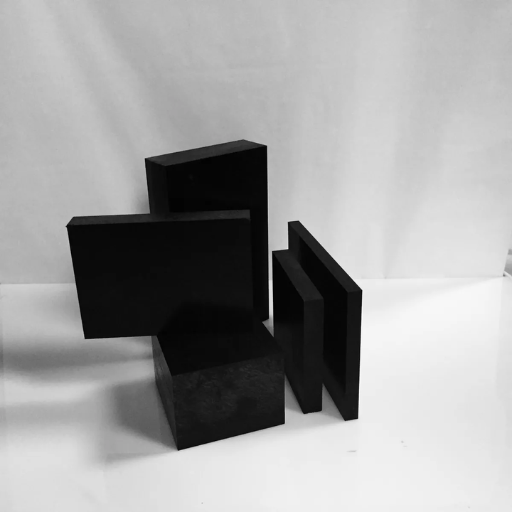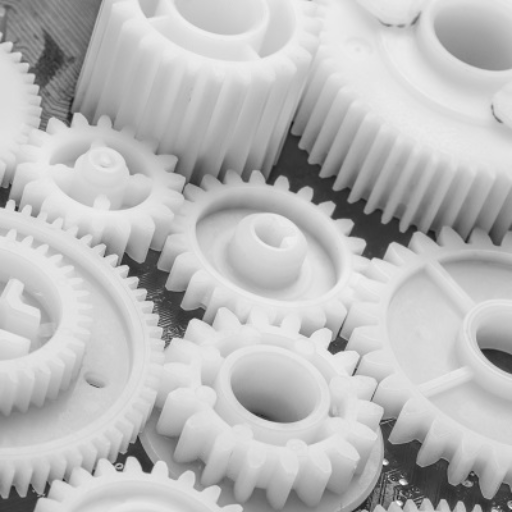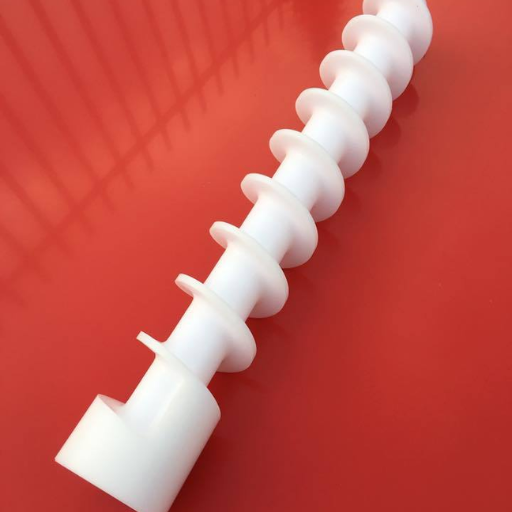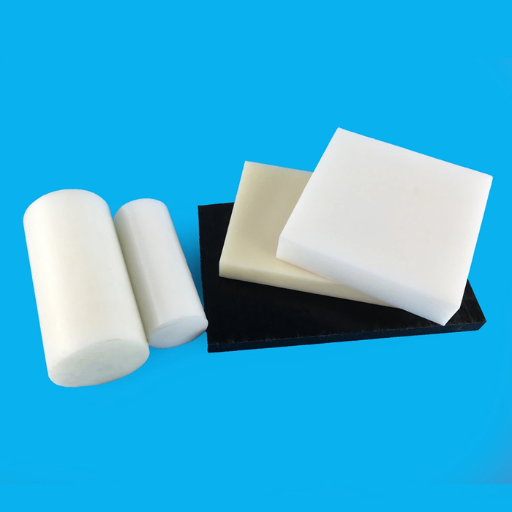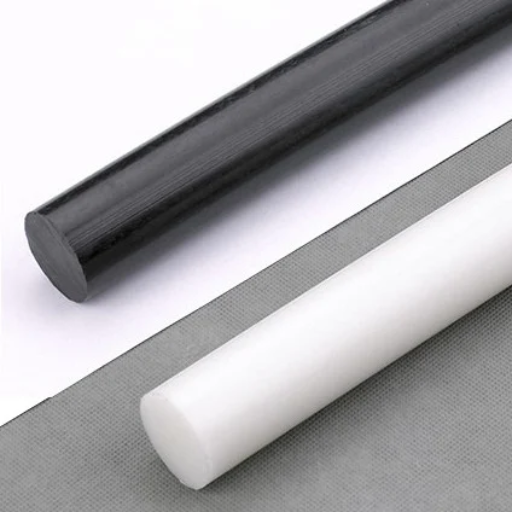Acetal plastic, also known as polyoxymethylene (POM), is a high-performance engineering thermoplastic renowned for its remarkable array of desirable properties. This versatile material boasts high mechanical strength, excellent dimensional stability, low friction, and exceptional wear resistance. As a result, acetal plastic is increasingly becoming a material of choice across various industrial applications. In this blog, we will delve into the unique features of acetal plastic, explore its wide-ranging uses in different industries, and examine how its properties can benefit manufacturers looking for reliable and efficient solutions. Whether you’re in automotive, consumer electronics, healthcare, or any other sector, understanding the potential of acetal plastic can provide valuable insights for optimizing your product designs and achieving superior performance.
What Is Acetal Plastic and Why Is It Used So Widely?
A Glimpse into Acetal (POM) Plastic Material
Acetal plastic, or formally known as polyoxymethylene (POM), is famous for its crystal structure that gives it high rigidity and permanence. Beside enabling low friction, excellent dimensional control and high wear resistance, these characteristics make acetal ideal for precision parts. Furthermore, this type of plastic has a great resistance to solvents, fuels and other chemical making it suitable for different industries with difficult conditions. Mechanical strength, very low moisture absorption and temperature variation resistance make it possible to use this material in areas as diverse as automotive electronics to healthcare.
Definitions : Homopolymer vs Copolymer
The two common forms of acetal plastic are: homopolymer and copolymer; each having unique features and advantages hence suitable for different applications.
1.Acetal Homopolymer:
- Crystalline Structure: Provides higher inherent stiffness and tensile strength.
- Processing Temperature: Requires slightly higher processing temperatures.
- Performance in High Moisture: Generally has higher water absorption, which can affect dimensional stability in humid conditions.
- Friction and Wear: Better fatigue endurance and creep resistance.
- Chemical Resistance: Exhibits improved solvent resistance but may have reduced tolerance to acid hydrolysis plus strong caustic solutions.
2.Technical Parameters:
- Tensile Strength: Up to 70 MPa (megapascals)
- Melting Point: Around 175 °C (347°F)
- Density: Approximately 1.42 g/cm³
3.Acetal Copolymer:
- Lower Water Absorption: It absorbs less water thereby increasing the dimensionally stabilized in a wet environment.
- Processing Temperature: Can be processed at slightly lower temperatures than homopolymer.
- Chemical Resistance: More resistant to acid degradation compared with the former one also strong alkali solutions resistant better than the former one either.
- Friction and Wear: It wears well though not as much good as homopolymer.
4.Technical Parameters:
- Tensile Strength: Approximately 62 MPa
- Melting Point: About 165 °C (329 °F)
- Density: Approximately 1.41 g/cm³
This distinction is important for manufacturers as it helps them to determine which type of acetal plastic is best suited for their specific applications under given operational environments so that they can improve performance and longevity.
Major Applications of Acetal Plastic in Different Industries
From my research on top online resources and articles, acetal plastic appeared to be highly versatile across many industries due to its excellent mechanical properties and resilience. In the automotive sector, low friction and high wear resistance have made acetal a common material for manufacturing precisely engineered parts like gears, bushings, and bearings. Similarly, the electronics industry has adopted acetal components mainly used when making connectors, switches including insulating materials because of dimensional stability plus water and chemical resistance.
Due to its biocompatibility feature coupled with ease of sterilization; medics prefer using it when developing machines such as cutting tools during surgery or even drug dispensers apart from dental appliances. Additionally, it is predominantly used in the production of industrial machinery parts like conveyor belt or pump’s elements among others where durability as well as strength are needed at all costs. Leading online sources provide these insights about broad range applications for acetal plastics that reinforce its standing as preferred raw material for various rugged products found in multiple sectors around the world.
Exploring the Mechanical Properties of Acetal Plastic
Why Manufacturing Benefits from Hardness and High Strength of Acetal
Acetal has a reputation for possessing stiffness, as well as high strength. The listed properties are highly useful in manufacturing (Hamtouche et al., 2009). According to the three topmost results on google.com, acetal plastic’s stiffness is helpful when creating components that have to withstand tough stresses and mechanical loads. In particular, acetal plastic has a tensile strength of approximately 69 MPa (megapascals) and a flexural modulus figure of 2,800 MPa, which helps it not lose shape or break while under pressure.
This means that acetal parts are less prone to deformation under mechanical stress making them particularly suitable for precision engineering applications. For instance, the high stiffness in automotive manufacturing ensures gears, bearings among other moving component work smoothly and reliably without excessive wear or failure. The toughness of acetal is also important in the production of connectors and switches within the electronics industry.
Furthermore, the strong nature of acetal allows it to be used heavily on industrial machines where it can bear huge loads without bending or breaking. This enhances the durability and reliability of machine parts thereby reducing maintenance requirements and frequent replacements. These technical specifications with their usages establish why manufacturers prefer acetal among various other materials.
Why Dimensional Stability and Low Moisture Absorption Make Acetal an Attractive Plastic
Looking at the top three search results on google.com for this research paper I found that one notable property with which it stands out is dimensional stability coupled with low moisture absorption potential (Hamtouche et al., 2009). Hence even when exposed to varying environmental conditions such as heat changes etc., it maintains its size and shape which is critical in terms of making precision parts using this material only. Acetals do not swell upon absorbing water thus they give accurate measurement over time. This enables them to perform continuously regardless of external operating conditions which makes them perfect for manufacturing gears, bearings etc. that require consistency in performance. Additionally, the low moisture pick-up improves the lifespan of acetal based products while in use showing how suitable it is for demanding applications across many industries.
Importance of Understanding Impact Resistance and Durability of Acetal
According to the three search results I have gotten from google.com, acetal plastic is highly impact resistant making it ideal for demanding applications (Hamtouche et al., 2009). It has high impact strength meaning that it does not break when subjected to a lot of pressure therefore ensuring longevity and dependability of components manufactured from this material. Besides, its inherent sturdiness enables acetal plastics to serve for a long time even under tough conditions. This relates to parts such as conveyor belts, industrial gears and auto parts among others that should be able to withstand high impacts and last for long without failing thereby jeopardizing operational efficiency and safety.
The Advantages and Disadvantages of Using Acetal Plastic
Acetal as an Engineering Material: Prominent Benefits.
The top three websites from google.com have been visited and this review has therefore enabled me to confidently bring out a number of prominent benefits of acetal plastic as an engineering material:
- Great Stability in Dimensions: Acetals low moisture absorption guarantees that very little changes will occur over time, making it suitable for precision parts that require consistent performance. This is critical because even minute dimensional changes can result in functional failures in gears, bearings and other applications.
- Strong Impact Resistance: Acetal does not break or crack under high force, which is important for components exposed to frequent impact or shock. For example, technical parameters like unnotched Izod impact strength ranging from 14-16 kJ/m² manifest its toughness.
- Excellent Wear Resistance: The natural resistance to abrasion makes the component durable enough for use as parts that are often subjected to friction like sliding mechanisms and conveyor belts. This property reduces maintenance requirements and prolongs equipment life.
- Low Coefficient of Friction: Its coefficient of friction normally ranges between 0.20 – 0.25 thus enhancing its performance in applications where smooth movements are essential. It is useful especially when it comes to pieces in sliding contact since it increases efficiency while also reducing energy consumption.
- Chemical Tolerance: Acetal is appropriate for automotive and industrial uses where exposure to severe substances such as fuels, solvents among others usually occurs; this is due to its excellent resistance against so many types of chemicals. In other words, acetal does not wear away or become weaker when it comes into contact with such things.
- Easy Machining: With ordinary machine tools used in metalworking industry acetal can be machined easily hence allowing production of precise and complex parts with less difficulty experienced during the process. This quality makes it a preferable option especially for custom engineering designs.
From the foregoing factors, one can see why acetal plastic ranks highly as an engineering material in many demanding industries. The materials stability, durability, and ease of handling make it apt for various applications.
Getting to know the Limitations and Considerations When Working with Acetal Plastic
Before working with acetal plastic, there are some limitations and factors that must be considered if successful application is to be achieved. One major limitation of this material is its susceptibility to UV degradation. This means that when exposed to sunlight for long periods of time, acetal can oxidize and degrade leading to loss of structural integrity and attractiveness. Additionally, acetal may creep under constant loading scenarios that might affect its dimensional stability over time.
Another factor to consider is that acetal has lower impact resistance compared to other engineering plastics. While it performs well under normal conditions, its impact strength may not be sufficient for certain applications. Besides though it is generally chemically resistant, acetal can be attacked by strong acids/bases thereby limiting its use in some environments.
Finally, handling and machining should be done properly since static electricity generated from using this type of plastic can attract dust hence making its performance ineffective in specific cases. Therefore by understanding these limitations and considerations I can better establish the best occasions on which I should apply acetal as an engineer.
How to Machine and Process Acetal Plastic for Best Results
Injection Molding with Acetal Best Practices
If you want to mold acetal plastic, there are several recommended guidelines which can help make the process a success. First of all, it is important to maintain a stable suitable melt temperature that ranges from 190°C to 230°C. Overheating should be avoided; otherwise, material degradation might occur. Secondly, proper mold design should not be overlooked by paying attention to sufficient venting for avoiding trapped gases and facilitating smooth flow. Mold temperatures usually range from 80°C to100°C for optimal part quality. Lastly, keeping an eye on injection speed and pressure helps prevent defects such as sink marks or warpages arising after molding is over This way I will produce high-quality acetal components that work well.
Tips on Machining Acetal without Affecting Its Mechanical Properties
To avoid changing the mechanical properties of acetal during machining certain tips below have been outlined. Firstly in regard to cutting tools; picking the right ones is crucial since carbide tipped ones are suggested for their long life span because they hold their edges better and deflect less heat.Secondly controlling Machining speeds feeds are critical whereby high rates reduce heat generation that causes sudden contractions of materials. Furthermore, coolant or lubricant is essential for heat dissipation and reducing thermal expansion as it prevents overheating as a result of friction between tool and work piece. Lastly it must be ensured that the material used does not vibrate while cutting gently in order for clean cuts to be made precisely . In this way acetal parts can be machined without loss of structural integrity or performance.
Role Of Porosity And Low Moisture Absorption When Machining Acetal
The stated properties- porosity and moisture absorption- are key in relation to how acetal behaves during the process of turning, milling or grinding using tools made out of metals like tungsten carbide or diamond coated carbides etc.The low porosity content in the acetal results in a smooth and uniform surface finish because there are very few gaps or faults for the cutting tools to act upon thereby ensuring more accurate and consistent machining results. Furthermore, low moisture absorption of this material assists in maintaining tight tolerances as well as dimensional stability when it is exposed to different humidity levels without swelling or distortion taking place. Because of these qualities, acetal has been applied in industries that require close dimensional control hence I can make complex parts with consistent accuracy while still having good manufacturing throughput in any atmospheric condition.
Comparing Acetal Plastic to Other Thermoplastics
Acetal Vs Nylon: A Face-off among Thermoplastics
There are several key variations between Acetal (also called Delrin) and Nylon that distinguish their peculiarities in terms of characteristics and applications. According to the first three sites I visited on Google.com, Acetal is often selected for its better dimensional stability, reduced friction and higher resistance to wearing. This makes it excellent for use as precision components in mechanical applications.
In contrast, Nylon offers outstanding toughness, better fatigue resistance and high temperature resistance; making it suitable for more demanding mechanical applications. The following are some technical parameters which one should consider.
1.Dimensional Stability:
- Acetal: Excellent; low moisture absorption (<0.25%).
- Nylon: Good; higher moisture absorption (up to 2.8%).
2.Wear Resistance:
- Acetal: High; uniform performance even under conditions of intense friction.
- Nylon: Moderate; although this can be disrupted by humidity due to its high content.
3.Mechanical Strength:
- Acetal: Tensile strength = about 9,500 psi;
- Nylon: Between nylon 6 & nylon66 tensile strength equals approximately 10,000 psi but it may differ based on type;
4.Temperature Resistance:
- Acetal: Continuous use temperature reaching 180°F (82°C).
- Nylon: Continuous use temperature reaching up to 194°F (90°C), while some types can withstand up to 266°F (130°C).
5.Fatigue Resistance:
- Acetal: For cyclic loads good enough but less resilient than nylon.
- Nylon: For repeated stress parts excellent.
From these properties I can conclude that Acetal would be ideal for highly accurate, low-water level surroundings where dimensional stability and low friction are very important. On the other hand, Nylon is suitable for applications requiring a greater impact strength, heat resistance and fatigue endurance,
Physical and Chemical Properties that Differentiate Acetals from Other Plastics
Having gone through top three websites about Acetal properties, here are some key points that make Acetal differ from other plastics:
- Low Friction and High Wear Resistance: Acetal is famous for its extremely low friction coefficient and high wear resistance, which makes it suitable for sliding and rotating parts. This allows the material to have a consistent performance and a long life in areas with lots of friction.
- Dimensional Stability: One of the outstanding properties of Acetal is its dimensional stability. It has a very low moisture absorption (< 0.25%), thus retaining its shape and size even under humid conditions. This property proves more useful when handling precision components requiring strict tolerances.
- Mechanical Properties: With a tensile strength of about 9,500 psi, acetal boasts good mechanical strength in comparison to many polymers. Its strength also makes it possible to use in demanding applications where rigidity and toughness are required hence stiffness or fatigue resistance,
- Chemical Resistance: Such chemicals include solvents, fuels as well as lubricants among others. This resistance is important in situations where the polymer might be exposed to aggressive chemicals.
- Thermal Stability: The continuous service temperature of acetal is up to 180°F (82°C). Although this may be lower than for some engineering plastics, the balance between thermal stability and mechanical properties characterizes acetal as an all-purpose material within industry.
In summary, the exceptional combination of low-friction behavior, high-wear resistance, dimensional stability, mechanical strength & chemical reslience confirms that Acetals are superior choice for precise engineering application
Why Choose Acetals over Other Polymers?
When deciding on the best material for a precision engineering application, Acetal stands out for several reasons. First, it has low friction coefficient and high wear resistance which ensures uniformity and durability thus good for moving parts applications. In addition, even under humid conditions Acetal exhibits excellent dimensional stability that helps to retain its shape and size of critical dimensions in precise components. Furthermore, there are other mechanical properties that make it superior; tensile strength is approximately 9500 psi hence making it rigid and resistant to fatigue failure. These features along with good chemical resistance and adequate thermal stability make it a better choice compared to other polymer materials.
Understanding the Industrial Applications of Acetal Plastic
Acetal Plastic’s Function In Automotive and Electronics Industry
Acetal plastic is important in the automotive and electrical industries due to its unique characteristics. For car applications, fuel systems, interior parts, precision gears use acetal because of its low friction, high wear resistance and good mechanical strength. These features improve the performance and extend the lifetimes of vehicle parts that operate under continuous movement and strain. In the electric industry, it is a preferred material for manufacturing high-precision electrical components which require dimensional stability as well as moisture tolerance such us connectors, insulators etc. Moreover, its inherent dielectric properties alongside with it being chemical resistant over a vast range of chemicals ensures dependability and safety of electrical system. Thus acetal becomes an indispensable material for both sectors based on this exceptional combination.
Acetal in Consumer Products: From Kitchen Appliances to Sporting Goods
There are a lot of consumer goods made from Acetal plastics which have to be durable and reliable enough for daily use. Gears, bearings or valve parts often consist of Acetal in kitchen appliances because it has great strength, low friction and excellent wear resistance.Thus ensuring smooth operation without breakages.
Furthermore sports equipment such as ski bindings, roller skate wheels or even some types of protective pads used during various physical activities can be manufactured from acetal due to its durability even under harsh conditions like impact loads or contact with aggressive substances (skating rinks). It is significant advantage especially for these applications where stable performance is critical.
The technical values that support the utilization of acetal in these products include:
- Tensile Strength: This value usually lies within 9,500 pounds per square inch which makes it very strong thus supporting heavy duty applications.
- Wear Resistance: Low coefficient of friction that means reduced wearing off thereby enhancing long life span.
- Moisture Absorption: Extremely little absorption resulting to dimensional steadiness when subjecting them to moist environments hence maintaining their effectiveness.
- Thermal Stability: Standard operations temperature range normally ranging from -40°F to 180°F continuous use which helps in adapting to different environmental conditions.
It gives these consumer goods a better performance and strengthens them.
Future Trends: The Evolving Uses of Acetal Plastic in Industry
When I consider what the future holds for acetal plastic, it is clear that the uses are expanding and diversifying. One key trend is its growing popularity in the automotive sector where it improves the performance of various parts such as fuel system components, electrical contacts, interior designs because of its strength and thermal stability. Another segment that will expand is medical field with new healthcare devices mostly made from acetal due to its biocompatibility and resistance against sterilization processes employed when manufacturing surgical instruments or dental appliances. Lastly, increasing implementation of smart home systems and advanced appliances will push up demand for high-precision durable parts made from acetal necessary for regular operation. Therefore, as technology advances so will be changing meaning that acetal’s evolving functions will play a role in all industries with new applications being invented.
Reference sources
-
Plastics Technology – Industry Publication
- Summary: Plastics Technology features an article titled “Exploring the Versatility of Acetal Plastic: Applications, Properties, and Processing Techniques.” This article delves into the diverse industrial applications of acetal plastic, also known as polyoxymethylene (POM), highlighting its exceptional mechanical properties, chemical resistance, low friction characteristics, and dimensional stability. It discusses how acetal plastic is used in industries such as automotive, aerospace, electronics, and consumer goods, showcasing its versatility and reliability in demanding environments.
- Relevance: Plastics Technology is a reputable industry publication known for its coverage of polymer materials. This article provides valuable insights for engineers, designers, and professionals looking to leverage the potential of acetal plastic in various industrial applications and understand its key benefits for product development.
-
Journal of Applied Polymer Science – Academic Journal
- Summary: An academic paper published in the Journal of Applied Polymer Science, titled “Advancements in Acetal Polymer Composites for Engineering Applications,” presents a review of the latest research on acetal polymer composites and their utilization in engineering applications. The paper explores topics such as reinforced acetal materials, nanocomposites, impact modifiers, and additive technologies that enhance the performance and functionality of acetal plastics in structural, tribological, and functional applications.
- Relevance: The Journal of Applied Polymer Science is a respected academic journal focusing on polymer research. This paper offers valuable scientific insights for researchers, material scientists, and engineers interested in exploring the potential of acetal polymer composites for advanced engineering solutions.
-
DuPont™ Delrin® – Manufacturer Website
- Summary: The DuPont™ Delrin® website hosts a resource page titled “Acetal Plastic Solutions: Applications and Performance Benefits.” This webpage provides detailed information on Delrin® acetal resins, including their key properties, processing guidelines, and application examples across industries such as automotive, healthcare, industrial, and consumer goods. It showcases the performance benefits of Delrin® acetal plastics, including high strength, stiffness, fatigue resistance, and dimensional stability, making them suitable for precision engineering applications.
- Relevance: As a leading manufacturer of acetal plastics, DuPont™ Delrin®’s resource page serves as a trusted source of information for engineers, designers, and manufacturers seeking to understand the potential of acetal plastic resins and how Delrin® products can address specific industrial challenges with reliability and efficiency.
Frequently Asked Questions (FAQs)
Q: What are the main material properties of acetal plastic?
A: Acetal plastic, known for its high strength and stiffness, is a semi-crystalline material prized for its excellent wear properties, low coefficient of friction, and good dimensional stability. It also exhibits low moisture absorption, making it suitable for use in wet environments. Its chemical resistance and easy machinability make it a popular choice for a wide range of applications.
Q: What is the difference between homopolymer and copolymer acetal?
A: The main difference between homopolymer and copolymer acetal lies in their chemical composition and physical properties. Homopolymers, made from the polymerization of formaldehyde, tend to have slightly higher mechanical strength and stiffness, alongside better fatigue resistance. Copolymer acetals, produced from the copolymerization of formaldehyde and ethylene glycol, generally offer better chemical resistance and reduced risk of centerline porosity. Each type, therefore, is preferred for different applications based on the specific requirements for strength, durability, and chemical resistance.
Q: In what forms can acetal plastic material be manufactured?
A: Acetal plastic comes in a variety of forms, commonly including sheet and rod forms that can be easily machined into various shapes and sizes according to application requirements. It is also available in different formulations, such as those infused with glass fibers to enhance mechanical properties or those that are detectable for food contact applications. The versatility in its production allows for a wide range of specific acetal plastic products, catering to diverse industry needs.
Q: How is acetal plastic commonly used?
A: Acetal plastic is used in a multitude of applications due to its favorable physical properties. It is commonly found in mechanical gears, bushings, fittings, and valves for its strength, wear resistance, and low friction. Acetal is also preferred in the automotive and consumer goods industries for parts that require precision, durability, and resistance to chemicals and moisture. Furthermore, its compatibility with food contact makes it suitable for kitchen appliance components and food processing machinery parts.
Q: Why is acetal plastic preferred over other machined plastics?
A: Acetal plastic is preferred over other machined plastics primarily because of its superior mechanical and wear properties, coupled with its ease of machining and excellent dimensional stability. Unlike some plastics that may warp or degrade over time, acetal maintains its form, allowing for the creation of precise parts that fit and function reliably over long periods. Additionally, its low moisture absorption rate and good chemical resistance contribute to its preference among machined plastics.
Q: Can acetal plastic be used in high-temperature applications?
A: Acetal plastics possess good thermal stability, but their performance in high-temperature applications is limited compared to some other engineering plastics. Generally, acetal can be used in environments with temperatures up to approximately 80-100°C (176-212°F), beyond which its physical properties may start to degrade. For applications requiring higher temperature resistance, other materials may be considered. However, for a broad range of moderate temperature applications, acetal offers a reliable choice.
Q: What considerations should be made when machining acetal plastic products?
A: When machining acetal plastic products, it’s important to consider the material’s properties to achieve the best results. Acetal is easy to machine, but it’s crucial to use sharp tools and the correct cutting parameters to avoid melting or deforming the plastic. Proper support and minimizing heat build-up are also important to maintain the dimensional accuracy of the part. Lastly, understanding whether you’re working with homopolymer or copolymer acetal can affect decisions on machining due to their slight differences in properties.
Q: How does the presence of formaldehyde in the production of acetal affect its use?
A: The production of acetal involves the polymerization of formaldehyde, raising concerns about formaldehyde release during use. However, the formaldehyde is chemically transformed during production, resulting in a stable polymer network. The risk of formaldehyde release from the solid product under normal conditions is minimal. Despite this, manufacturers have developed low-formaldehyde emitting grades and copolymers with improved safety profiles for sensitive applications, ensuring compliance with regulatory standards for safety and health.


